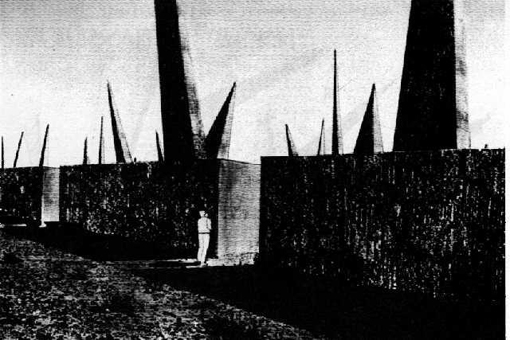Wild Ideas
Posted on October 27, 2010 | posted by:
I’ve been spending too much time in the studio. I’m starting to see transdisciplinarians wherever I go…
Last week some fellow TransDesign students and I went to hear renowned Harvard professor and MacArthur Fellow Peter Galison deliver Parson’s 5th annual John McDonald Moore Memorial Lecture. Galison is a science historian, a documentary filmmaker, a writer and an educator (transdisciplinary to a “t”). He isn’t a designer, but when he says he’s “interested in the way we make things, and then those things act back upon us,” it’s hard not to feel like he’s speaking our language.
Galison’s lecture, Wasteland and Wilderness, opened with a bleak picture of what he calls the “51st state of waste” – the enormous quantity of land and resources devoted to containing the byproducts of a half-century of nuclear weapons testing and power generation in the United States. Most people wouldn’t think to compare this contaminated radioactive landscape with the relative purity of our national parks and protected wilderness areas. But instead of thinking of wasteland and wilderness as simple opposites, Galison argues that we learn much more from looking at the similarities in our behavior toward these “zones of exclusion.”
His argument is a textbook example of the critical reframing that we designers strive to apply in our thinking. As we learned in class recently, when designers at OXO wanted to design an innovative new potato peeler, they didn’t turn to average users for ideas. They looked at the needs of the elderly and people with arthritis. They looked at extreme users, extraordinary demands, and opposing scenarios. In doing so, they were able to break free of the limiting effects of established thinking and find new ways of seeing an old problem. Likewise, when Galison looks at the way we approach (or avoid) the apparent opposites of wasteland and wilderness, he finds a novel perspective from which to observe our deeper relationships with land and nature in general.
As the evening’s program put it: “Galison argues that the categories of wastelands and wilderness are far from dichotomous; that their relation is far more intriguing (and disturbing) than a binary of purity and corruption. Removing parts of the earth in perpetuity – for reasons of environmental protection or destruction – alters a central feature of the human self, presenting us in a different relation to the physical world, and raising irreducible questions about who we are when land can be classified, forever, as not for us humans.”
It also poses what design theorist, Richard Buchanan, would call some “wicked” design challenges. How do we design a system to safely contain plutonium that has a radioactive half-life of 24,000 years? Leaking nuclear waste facilities across the country are evidence of the technical challenges posed by this kind of long-term planning. But there’s the human element to consider as well. How do we communicate the dangers of buried nuclear waste to unforeseeable future populations? What if our language is no longer spoken, our message has faded, or our instructions are deliberately ignored?
Leading minds at the Department of Energy have proposed some laughable solutions to these problems – everything from ominous thorny monuments to enduring waste theme parks. But, as Galison points out, these solutions say more about our present anxieties than they do about what the future will hold. There’s simply no way to know if you’ve definitively solved a “wicked problem.” And it seems there’s no way to know if our nuclear wasteland or our natural wilderness will be safe and secure after we are gone.
The hieroglyphs warning us away from the tombs of the pharaohs only served to show us where to dig. How can we do better?